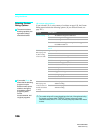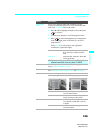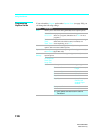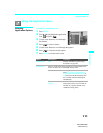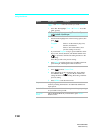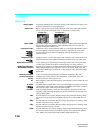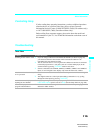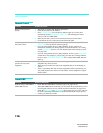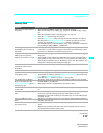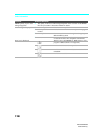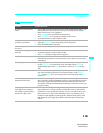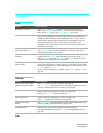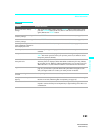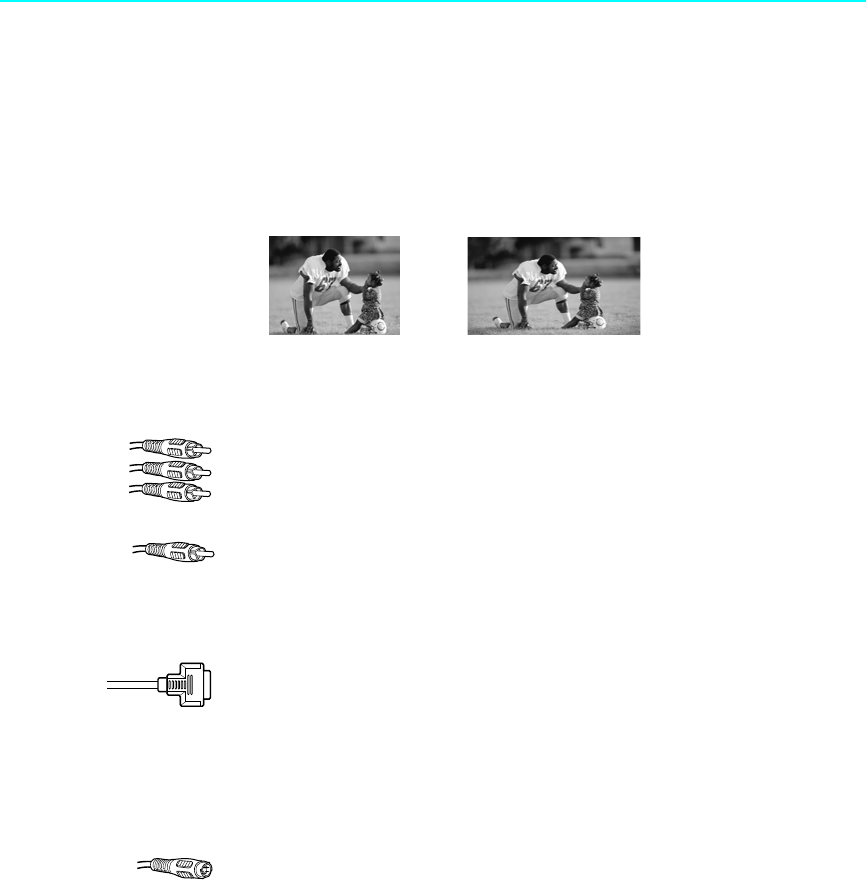
Other Information
114
KDF-55/60XS955
2-059-372-11(1)
Glossary
analog signal A signaling method that uses continuous changes in the amplitude or frequency of an
electronic transmission to convey information.
aspect ratio Refers to the ratio between the width and height of the screen. This LCD projection
TV has a 16:9 (widescreen) aspect ratio, as opposed to a 4:3 aspect ratio.
Cable CARD The PCMIA shaped card provided by your cable TV company which descrambles the
digitally encrypted cable channels. You should check with your local cable TV
company about Cable CARD service.
component video Component video is sent through three cables: two color shade (chrominance) signals
and one brightness (luminance) signal. Component video achieves greater color
accuracy than composite video or S VIDEO by splitting chrominance into two
separate portions.
composite video Composite video is sent through a single cable. Composite video combines the color
shade (chrominance) and brightness (luminance) information into one video signal.
digital television (DTV) A new technology for transmitting and receiving broadcast television signals. DTV
provides higher resolution and improved sound quality over analog television.
HDMI (High-Definition
Multimedia Interface)
Provides an uncompressed, all-digital audio/video interface between this TV and any
HDMI-equipped audio/video component, such as a set-top box, DVD player, and
A/V receiver. HDMI supports enhanced, or high-definition video, plus multi-channel
digital audio.
National Television
System Committee
(NTSC)
A unit of the Federal Communications Commission, Washington, DC, that
establishes television standards in the United States, such as NTSC Color, the
standard used in this LCD projection TV.
RF Radio Frequency. That part of the frequency spectrum that is used to transmit TV and
radio signals.
S VIDEO S VIDEO requires a single cable, which carries the brightness (luminance) and color
(chrominance) signals of the picture separately. S VIDEO provides better resolution
than composite video, which carries the signals together.
VHF/UHF VHF (Very High Frequency) is the part of the frequency spectrum from 30 to 300
megahertz. UHF (Ultra High Frequency) is the part of the frequency spectrum from
300 to 3,000 megahertz.
480i Provides 480 lines of resolution. Displays images using interlaced scanning, which
first transmits all the odd lines on the LCD projection TV screen and then the even
lines.
480p Provides 480 lines of resolution. Displays images using progressive scanning, which
transmits each line from top to bottom.
720p Provides 720 lines of resolution. Displays images using progressive scanning, which
transmits each line from top to bottom.
1080i Provides 1080 lines of resolution. Displays images using interlaced scanning, which
first transmits all the odd lines on the LCD projection TV screen and then the even
lines. 1080i is one of the formats used by HDTV (High Definition TV).
4:3 aspect ratio
16:9 aspect ratio



